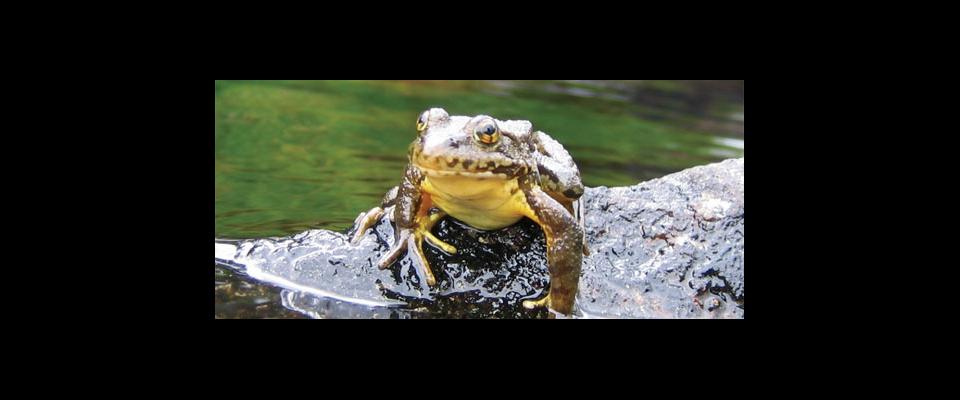Almost a hundred years ago, legendary Berkeley biologist Joseph Grinnell took his first cataloguing trip to the Sierra Nevadas. In those days, mountain lions and bighorn sheep were plentiful. Wolves and California grizzlies had not yet been driven out. And, according to Grinnell, the most common creature was the mountain yellow-legged frog.
Today, mountain yellow-legged frogs are dying in heaps, says John Taylor, professor of plant and microbial biology. There has been an estimated 92 to 96 percent drop in their population in the Sierras in the past 100 years that mirrors a worldwide one-third drop in amphibian populations—and the culprit may be fungus reproduction no one even knew was possible. It is believed an ancient group of fungi, called chytrids, are interfering with the frogs’ ability to absorb water through their skin. Scientists estimate that there are 1.5 million fungus species, but only a tenth are known to science. The fungus Taylor studies, Batrachochytrium dendrobatidis, is so mysterious that scientists can’t tell male from female and don’t even know whether it has genders.
“We know it makes spores. We know it swims,” says Taylor, and pauses. “We know how long they persist.” And now he knows what the chytrids’ genetic map, or genome, looks like. In a recent paper in the Proceedings of the National Academy of Sciences, Taylor and a grab bag of scientists from all over campus used the genome to show that the fungus in the Sierras may be having sex.
That’s no small thing. Taylor says that scientists have assumed the tiny organism, which hasn’t changed much since animals and fungi parted ways on the evolutionary tree, reproduces by simply splitting in half. But if the fungus has sex, the offspring may have a temporary form that survives without host frogs, and maybe even without water. This means that the fungus may be hitching a ride from hikers, tourists, or—perish the thought—frog researchers. It also means that repopulating the ponds may be out of the question, since the fungus could still be lurking ten years after the last frog dies.
The Berkeley researchers say there’s not much anybody can do but watch and learn. Frog die-offs—distressing though they are—teach us about how epidemics work; including Dutch elm disease, sudden oak death, and even AIDS. Not only are Third World AIDS patients susceptible to fungal infections, but there are similarities in the way any epidemic moves through a population.





















